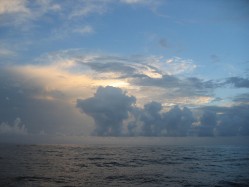 Weather for Sailors
Weather for Sailors
This course is aimed at people who have spent some time outdoors, primarily on the water, who wish to understand more about how the weather works, where to get information from and how to interpret and use it. No prior weather tuition is required and it can be taught in one very full day. The syllabus is as follows:
Global Weather Patterns
The Effect of Surface Temperature Differences – Thermal Wind Balance
The Coriolis Effect
The Ocean High Pressure Systems – How are they Formed?
Mid-Latitude Weather Systems
Air Masses
Clouds – What are they and What do they Mean?
The Life Cycle of a Mid-Latitude Depression
General Summary of Conditions as a Low Pressure System Moves Overhead
Case Study of a Depression
High Pressure Systems and their Interaction with Low Pressure Systems
The Interaction of Multiple Systems
Buys-Ballot’s Law
Some Localised Surface Phenomena
Changing the Surface Friction as Wind blows over Land and Sea
Being Headed or Lifted as You Sail Offshore
Convergence and Divergence
The Boundary Layer
Sea Breeze
Land Breeze
Katabatic Winds
Chinook or Fohn Winds
Radiation (or Land) Fog
Advection (or Sea) Fog
Predicting Gusts
Using Upper Level Information to help with Surface Forecasting
Will it Snow or Rain?
Will a Particular Low Deepen or Dissipate?
Can We Predict the General Path of the Lows?
Tropical Weather Systems
The Inter-Tropical Convergence Zone
Trade Winds and the Ocean Highs
Tropical Waves, Squalls and Diurnal variation
The Madden-Julian Oscillation
El Nino and La Nina
Acceleration Zones and the Effect of Islands
Hurricanes – how they Start and Develop, and what Actions to take
Modern Numerical Weather Forecasts
Route Planning and Preparation
Publications, charts and on-line information
Passage Planning Case Study

